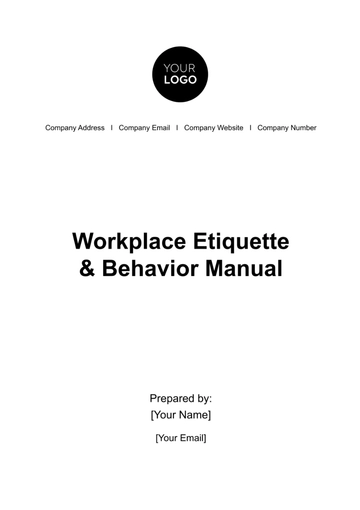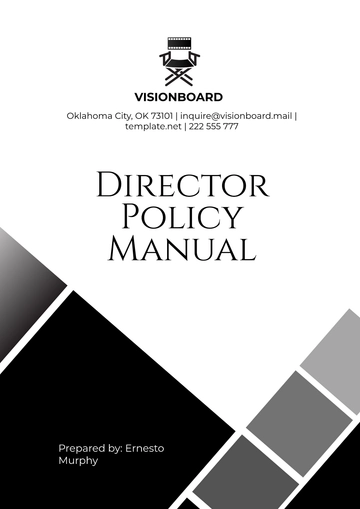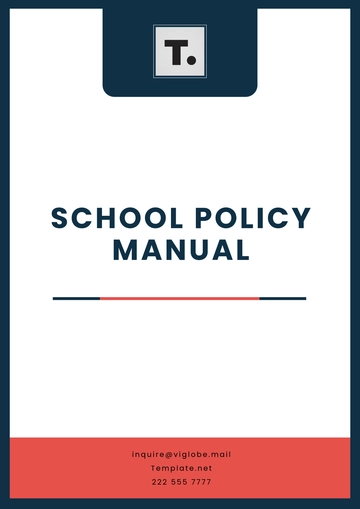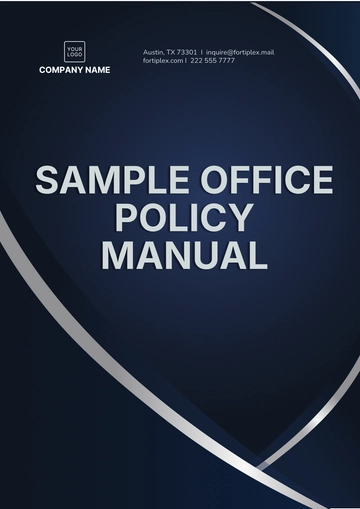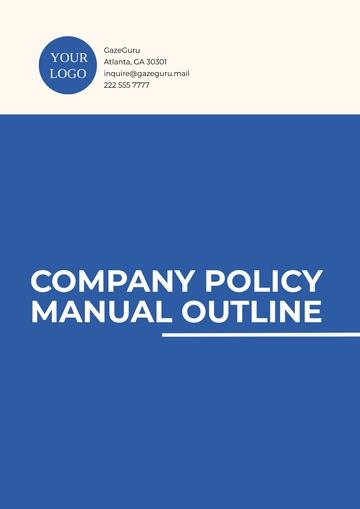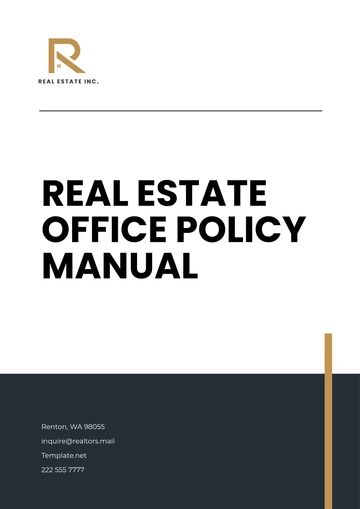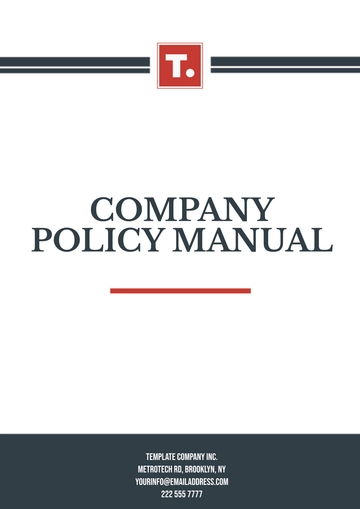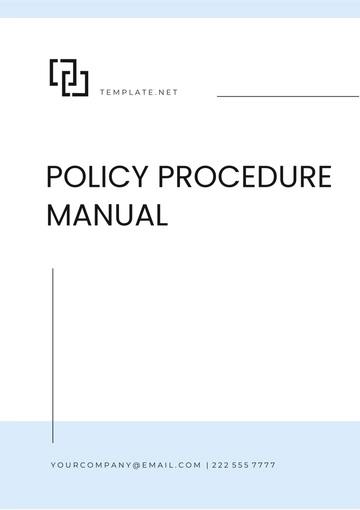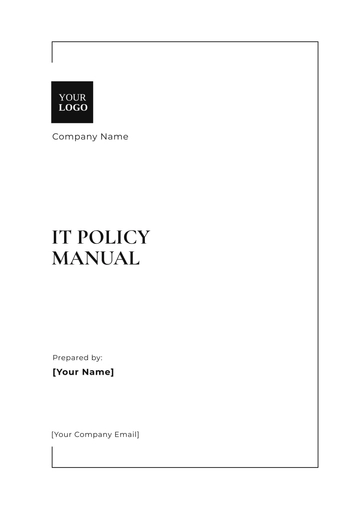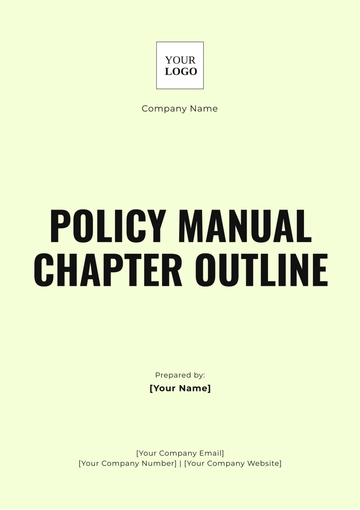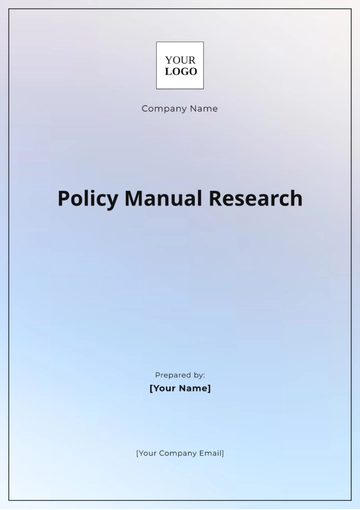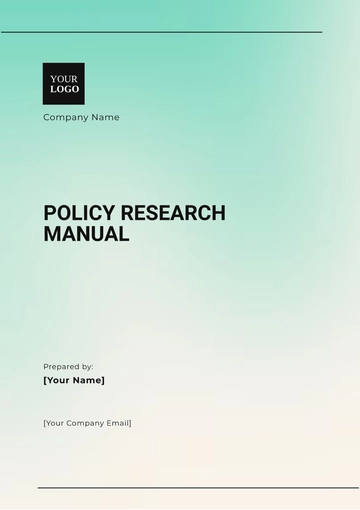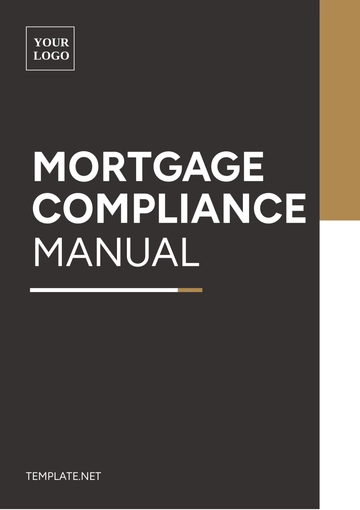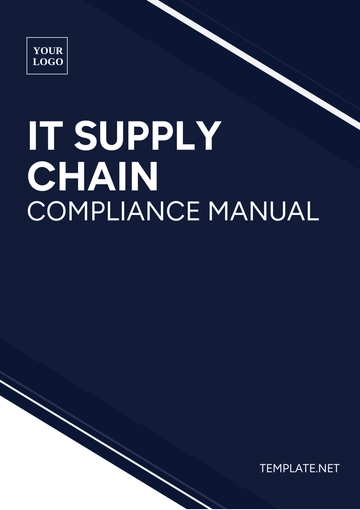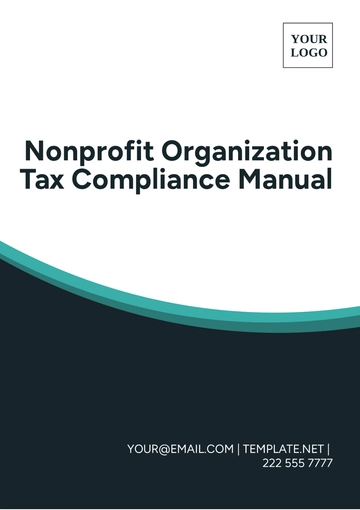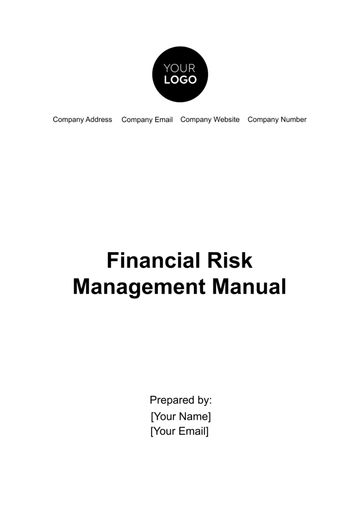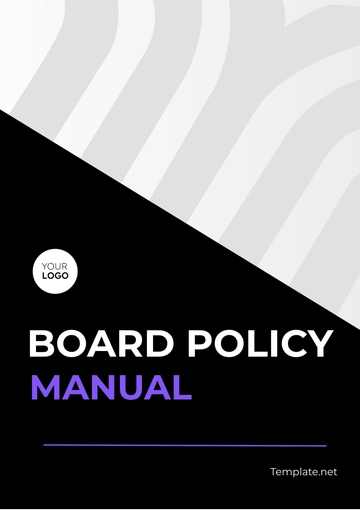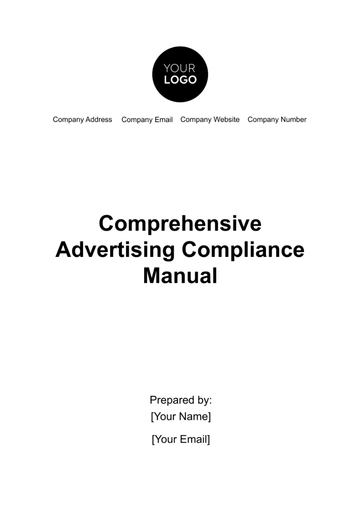Free Comprehensive Advertising Compliance Manual
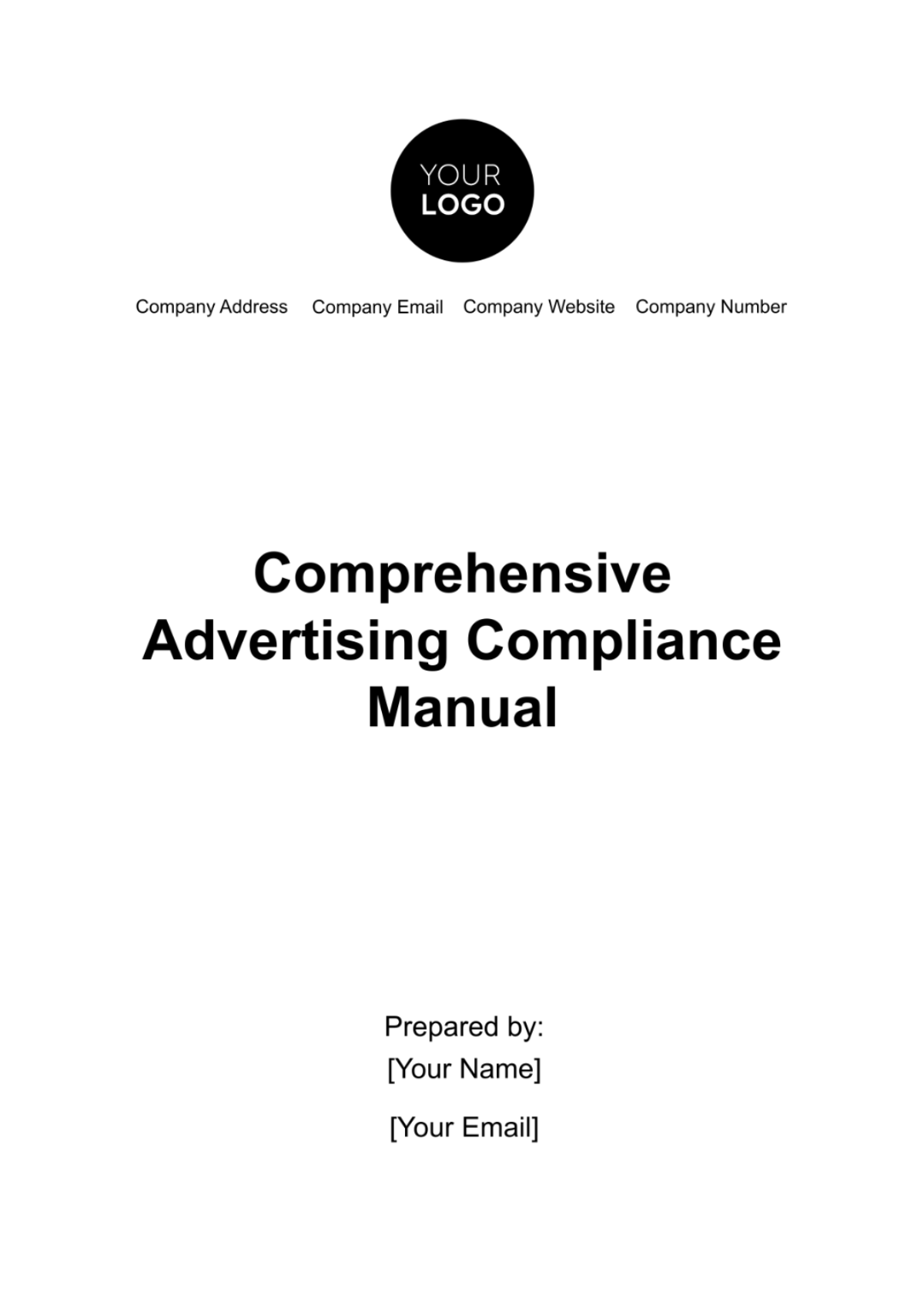
I. Introduction
This Comprehensive Advertising Compliance Manual was made for both clarity and guidance. Its primary purpose is to give light to the complex laws, regulations, and ethical considerations that surround advertising practices. By depicting the principles of compliance, this manual serves as a guide that can direct our efforts towards campaigns that not only captivate but also uphold the highest standards of legality and integrity.
Scope And Applicability
The scope of this manual goes beyond the confines of legal adherence; it extends to the core of our organizational mindset. It is designed to be a dynamic resource, giving all stakeholders the knowledge and tools necessary to go through the requirements of advertising compliance. Applicable to every individual involved in the advertising process, from inception to execution, this manual covers a shared commitment to excellence and ethical conduct.
II. Legal Framework
We will go through the legal framework governing advertising practices. Understanding and adhering to these regulations is of great import to maintaining our commitment to legal compliance and ethical standards.
A. Overview Of Advertising Laws And Regulations
Local Regulations
Explore the different facets of advertising laws at the regional and municipal levels, emphasizing the importance of tailoring campaigns to meet specific locality requirements. Examples of local regulations are as follows:
Outdoor Advertising Restrictions (Municipal Level)
Local Alcohol Advertising Regulations (Regional Level)
Noise Control in Commercial Districts (Municipal Level)
Local Environmental Impact Considerations (Regional Level)
Municipal Fair Trading Practices (Municipal Level)
It's important to note that advertising laws can change frequently, and [Your Company Name] should stay informed about the specific regulations applicable to their region and municipality.
2. National Regulations
Provide an in-depth examination of national advertising laws, emphasizing key statutes and regulatory bodies that shape our advertising obligations. Examples of national regulations are as follows:
Consumer Protection Laws
Trademark and Intellectual Property Laws
Tobacco and Alcohol Advertising Regulations
Data Protection and Privacy Laws
Anti-Competitive Practices and Monopoly Laws
These examples highlight key areas where national advertising laws commonly come into play. It's important for [Your Company Name] to be aware of and comply with these laws to avoid legal issues and maintain ethical advertising practices.
3. International Considerations
It is important that [Your Company Name] goes through the complexities of international advertising regulations, spotlighting global standards and cross-border implications for our advertising endeavors. Here are some examples of international regulations that [Your Company Name] should consider:
International Chamber of Commerce (ICC) Code on Advertising and Marketing Communication
World Health Organization (WHO) Framework Convention on Tobacco Control (FCTC)
United Nations Guidelines for Consumer Protection
Organization for Economic Co-operation and Development (OECD) Guidelines on
Digital Advertising
European Union (EU) General Data Protection Regulation (GDPR)
These examples highlight international frameworks that influence advertising practices globally. It's important for [Your Company Name] to be aware of these principles, as well as any country-specific regulations that may apply when engaging in international advertising.
B. Consumer Protection Laws
Unpack the layers of consumer protection laws, clearing up how these regulations can safeguard our audience from deceptive practices and ensure fair and transparent interactions.
C. Data Privacy And Advertising
General Data Protection Regulation (GDPR)
Study the specifics of GDPR, outlining how its principles govern the collection, processing, and protection of consumer data within our advertising initiatives.
Other Applicable Data Privacy Laws
Survey additional pertinent data privacy laws, providing a comprehensive understanding of our responsibilities in safeguarding consumer information.
III. Internal Policies And Procedures
We expound upon the foundational framework that governs our internal advertising practices. It serves as a comprehensive guide for employees, elucidating the principles and processes that underpin our commitment to legal compliance, ethical advertising, and brand integrity.
A. Company Advertising Policies
Statement Of Compliance
This subsection articulates our unwavering commitment to compliance with advertising laws, regulations, and ethical standards. It outlines the core principles that govern our advertising endeavors, emphasizing transparency, accuracy, and fair competition. The statements of compliance are as follows:
Introduction and Purpose
Scope of Compliance
Legal Reference
Consumer Protection and Fair Practices
Data Protection and Privacy
Product and Service Claims
2. Approval Process For Advertising Campaigns
We define the systematic approach to gaining approvals for advertising campaigns. The process encompasses the stages from concept inception to campaign deployment, ensuring that each step aligns with our compliance standards. The stages are as follows:
Concept Development
Internal Review
Legal and Compliance Review
Budget Approval
Senior Management Approval
B. Roles And Responsibilities
Advertising Compliance Officer:
This section outlines the pivotal role this officer plays in overseeing and enforcing adherence to advertising policies. It includes a detailed description of responsibilities, emphasizing the importance of maintaining a vigilant stance on compliance matters. Here are their responsibilities as follows:
Legal Compliance
Review and Approval for Industry Standards
Documentation and Record-Keeping
Safeguarding [Your Company Name]'s reputation and ensuring that advertising campaigns are not only effective but also ethical and legally sound are what a compliance officer must do.
2. Approval Authorities:
Recognizing that responsibility is distributed across various organizational levels, this subsection defines the roles of individuals vested with approval authority. By clearly delineating the hierarchy of approval, we ensure that decision-makers possess the requisite knowledge and authority to uphold compliance standards. The approval authorities goes as follows in this order:
Creative Director
Compliance Officer
Chief Marketing Officer (CMO) or Marketing Director
IV. Advertising Content Guidelines
Effective advertising content is paramount to maintaining the integrity of our brand and complying with legal and ethical standards. The following guidelines outline the principles governing the creation and distribution of advertising materials.
A. Truthfulness And Accuracy
All advertising content must be truthful, accurate, and verifiable.
Avoid exaggerations, misleading claims, or deceptive tactics in any form.
Provide supporting evidence for factual claims when necessary.
B. Transparency In Advertising
Clearly disclose the identity of the advertiser in a prominent and legible manner.
Ensure transparency regarding the nature and purpose of promotional content.
Clearly distinguish between editorial and advertising content to avoid confusion.
C. Avoiding Misleading Statements
Prohibit the use of language, imagery, or formatting that may mislead or confuse consumers.
Clearly communicate any conditions, limitations, or exceptions associated with advertised products or services.
D. Fair Competition Practices
Adhere to fair competition principles in accordance with applicable laws and regulations.
Avoid disparaging competitors and focus on promoting the unique attributes of our products or services.
V. Data Privacy And Consent
We will now go into the details of data privacy and consent, recognizing the importance of safeguarding consumer information in the realm of advertising.
A. Collection And Use Of Consumer Data
It is imperative to have a meticulous approach to the collection and utilization of consumer data. This section elucidates the principles governing the lawful acquisition, processing, and storage of personal information, aligning our practices with global standards.
Lawful Basis For Processing
Expounds upon the legal grounds that validate our processing of consumer data, emphasizing compliance with the General Data Protection Regulation (GDPR) and other pertinent data protection laws.
Data Classification And Sensitivity
Introduces a nuanced classification system for consumer data, acknowledging the varying degrees of sensitivity and prescribing tailored security measures accordingly.
B. Consent Mechanisms For Data Processing
This subsection meticulously delineates the mechanisms employed to obtain informed and unequivocal consent from individuals whose data we process. Recognizing consent as the keypoint of ethical data handling, the following aspects are exemplified:
Clear And Unambiguous Consent
Establishes the standard for obtaining clear and unambiguous consent, emphasizing plain language and avoiding ambiguity in consent requests.
Voluntariness And Withdrawal
Affirms the voluntary nature of consent, empowering individuals with the right to withdraw their consent at any time without detriment.
C. Data Security Measures In Advertising
Data forms the cornerstone of any advertising campaigns, and this subsection will articulate the stringent measures in place to fortify the security of consumer information.
Encryption And Anonymization
Advocates for the use of encryption and anonymization techniques to protect data during transmission and storage, mitigating the risk of unauthorized access.
Access Controls And Authentication
Expounds on access control mechanisms and authentication protocols to restrict data access to authorized personnel only, bolstering the confidentiality and integrity of stored information.
VI. Endorsements And Testimonials
Endorsements and testimonials play a pivotal role in shaping our advertising narrative. In compliance with industry standards and regulations, this section provides clear guidelines on their usage.
A. Use Of Endorsements In Advertising
Define the parameters for employing endorsements, ensuring transparency and authenticity.
Emphasize the importance of aligning endorsements with the genuine experiences and opinions of endorsers.
B. Disclosure Of Material Connections
Illuminate the necessity of transparently disclosing any material connections between endorsers and the advertised product or service.
Provide specific instructions on the placement and format of disclosure statements to enhance visibility and comprehension.
C. Guidelines For Testimonials In Advertising
Outline criteria for soliciting and utilizing testimonials, emphasizing authenticity and relevance.
Establish a standardized format for presenting testimonials, balancing the need for impact with adherence to disclosure requirements.
VII. Digital Advertising Compliance
Digital advertising is subject to a specific set of regulations and guidelines to ensure legal and ethical practices. This section encompasses:
A. Online Advertising Regulations:
Navigate the intricacies of laws governing online advertising to maintain compliance across digital platforms.
B. Compliance With Social Media Advertising Standards:
Adhere to the unique requirements and standards set by social media platforms for advertising content.
C. Search Engine Advertising Guidelines:
Comply with search engine advertising guidelines to optimize visibility while maintaining adherence to industry standards.
D. Display Network Compliance:
Ensure compliance with regulations governing display networks, balancing effective promotion with legal and ethical considerations.
VIII. Monitoring And Enforcement
Effective monitoring and enforcement mechanisms are integral to maintaining a high standard of compliance with advertising regulations. This section outlines the procedures and tools employed to ensure adherence to the guidelines set forth in this Comprehensive Advertising Compliance Manual.
Monitoring And Enforcement Summary Table
Aspect | Method | Frequency |
Periodic Audits | Scheduled Audits | Quarterly |
Spot Checks | Randomized Assessments | Monthly |
KPIs | Performance Metrics | Ongoing |
Incident Reporting Form | Reporting Tool | As Needed |
Anonymous Reporting | Confidential Reporting Channel | Ongoing |
Progressive Disciplinary Actions | Tiered Disciplinary Measures | Depending on Severity |
Educational Measures | Targeted Training Programs | As Required |
Immediate Corrections | Swift Rectification of Non-Compliance | Upon Identification |
Root Cause Analysis | In-Depth Analysis of Non-Compliance | As Needed |
Preventive Measures | Implementation of Preventive Strategies | Continuous |
IX. Recordkeeping And Documentation
This section emphasizes the critical importance of effective recordkeeping and documentation in ensuring advertising compliance. It outlines the necessary steps for maintaining thorough records throughout the advertising lifecycle.
A. Recordkeeping Requirements:
Clearly define the specific data and documents that must be recorded for each advertising campaign, stressing accuracy and completeness.
B. Documentation Process:
Establish a streamlined process for documenting approvals, modifications, and relevant information, promoting consistency in format and organization.
C. Retention Periods:
Specify the duration for retaining records, aligning with legal requirements and emphasizing the significance of adherence for compliance and future reference.
- 100% Customizable, free editor
- Access 1 Million+ Templates, photo’s & graphics
- Download or share as a template
- Click and replace photos, graphics, text, backgrounds
- Resize, crop, AI write & more
- Access advanced editor
Discover the ultimate solution for seamless advertising compliance with Template.net's Comprehensive Advertising Compliance Manual Template. Crafted to streamline regulatory adherence, this editable and customizable manual empowers businesses to navigate complex guidelines effortlessly. With the innovative Ai Editor Tool, ensure precision and efficiency in compliance management like never before.


